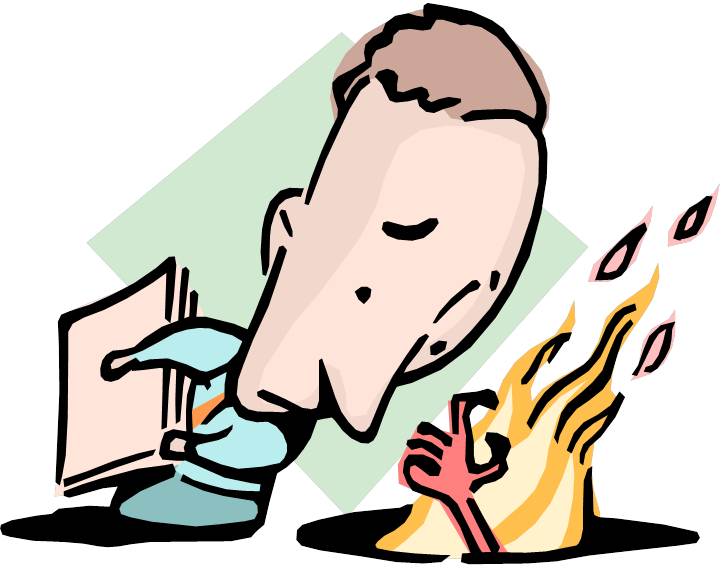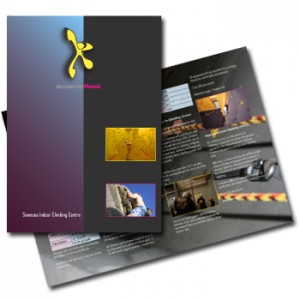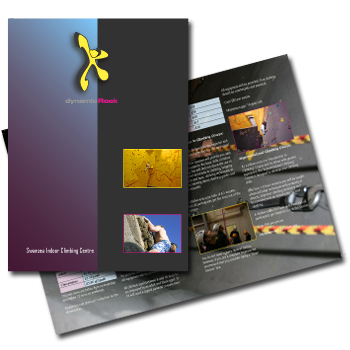Entries Tagged 'brochure copy' ↓
June 4th, 2014 — brochure copy, brochure copywriting
Is there really a place for brochures in today’s online world? 
Of course there is.
Whether you have them printed as a hand-out for exhibitions or conferences, or as a PDF download from your website, brochures remain a valid form of marketing collateral.
So, if that’s the case, why did your last one tank?
Why did no one read it?
Your brochure is only as good as the images and words it contains and brochure copywriting isn’t as easy to write as you may think.
Here are some of the main reasons why your brochure failed.
#1 Re-using existing copy
Before I begin, if you think all you have to do is copy the content from your website and paste it into your brochure, think again.
You are creating your brochure for a specific purpose, so it’s important the information it contains is relevant.
#2 Relevancy
Normally, your brochure exits to promote a new product or service (occasionally a range of services).
If that’s the case don’t fill the pages with stuff about everything else you do. Granted, you can have a page at the back that gives an overview of that stuff, but the main focus should be on the product you’re promoting.
#3 Going all literary
You already know that your website copy should be chatty, informal and interesting, so why have you just filled your brochure with mind numbing hyperbole?
Just because you’re writing for something that’s (potentially) going to be published doesn’t mean you’re writing a classic work of fiction.
You’re writing for the same audience so keep your language simple and your style the same as your web copy. Remember, it should look as though it’s come from the same company.
#4 Naff images
Why use stock images that have no relevancy to your business when you can get your own graphics created and photos taken?
This brochure is supposed to represent your business, so make sure your imagery is personal to you.
#5 Talk to the reader
Don’t write your brochure in the third person.
It’s there to convince the person reading it to buy from you, make contact or book an appointment. Use the second person (i.e.’you’) to talk to them directly and tell them how buying from you will benefit them.
#6 Tell them what they need to know not what you want to talk about
As a business owner, it’s tempting to tell the world how great your company is and how hard you’ve worked to get where you are today.
The problem is your customers really don’t care.
They want to know how you’re going to help them, why their lives will be better as a result and how to get in touch. It’s as simple as that.
Keep your content focused on your customer not on your business.
How many of those are you guilty of?
Brochures can be powerful tools when written correctly.
Writing for your own company can be tough, which is why it is a good idea to bring in an external copywriter with no knowledge of your company who can look at what you do from a customers’ perspective.
Author: Sally Ormond, Briar Copywriting Ltd
July 1st, 2011 — briefing a copywriter, brochure copy, brochure copywriting
 Doesn’t it look great?
Doesn’t it look great?
It took months to put it together but there it is in all its glory. Your new, shiny, gorgeous corporate brochure is ready to be distributed.
Are you pleased with it?
Hmm…if you’re that pleased there may be a problem – let me tell you why.
Giving in to temptation
Everyone does it now and then but temptation has its place and there is no room for it in your brochure.
Often, when you start to think about the content for your corporate brochure you:
- Talk about you
- You give your opinions on you
- You talk about what you want to achieve
Boring.
Don’t get me wrong. What you do is incredibly valuable but people (i.e. Joe Public) aren’t interested in what you think about your self, they are interested in themselves.
Doing it right
With the economy being what it is at the moment, the fact that you’re investing in a glossy, expensive corporate brochure tells the market (and all your competitors) that you’re doing well; you have a motivated and engaged team who are working their butts off to make you look great.
Fantastic – by why do all of this?
Well, a good brochure will help you:
- Gain investor confidence
- Attract new clients
- Show existing clients what you can do for them
- Impress the great and the good
But the problem is that there aren’t that many companies out there who do it right.
There’s no escaping the fact that you need a large team to pull off a cracking end result – designers, photographers, a great brochure copywriter. These guys are all experienced in what they do and can easily collaborate to achieve the ultimate end result.
However the main problem lies within your company. Although one person is assigned the headache of pulling the expert team together, the review stage is usually done by many people (CEOs, Directors etc.) which means there are too many opinions flying around the room.
Your brochure should not contain any corporate speak – in fact your expert copywriter would have gone to great pains to ensure the language is simple, accessible to all, clear and powerful which is not an easy thing to pull off. And yet by the time the copy has gone round everyone it’s mutated into an overly intellectual hotchpotch of meaningless drivel.
The design has been mauled mutating the understated, tasteful design into something way too ostentatious. And the wonderful photography of your staff and company has been replaced by dodgy stock images.
Why?
If you call in a group of experts to create your corporate brochure let them get on with it – they know what they are doing.
The perfect formula
Your corporate brochure has to be something people will want to pick up and read. If they don’t it becomes an extremely expensive coaster.
Use it wisely and make sure yours includes:
- A personal letter written by your Chairman or CEO
- Photos of your staff (be proud of them and show them off)
- Testimonials from customers
- Engaging case studies to show how you have helped clients overcome typical challenges
- A profile of your organisation
- Benefits driven copy to show how you can help your customers
- High level product descriptions and images
- Full and correct contact details
To make sure yours is done right make sure you start the process of with a plan. Decide amongst yourselves what you want to achieve, how you want it to look and how you want it to sound.
Then provide your expert team with a detailed brief for each element – design, photography and copywriting.
After that, sit back and let them get on with it.
Setting out your vision at the outset will ensure your get the result you were looking for.
Time to have your say
I’ve spouted on long enough, now I want to hear from you.
What, in your opinion, makes a good brochure?
July 22nd, 2009 — advertising copywriting, brochure copy, website copywriter
One of the most important aspects of your company’s marketing is its continuity.
Brand identity is key to gaining your customers’ confidence. If your marketing materials are the same across the board, your clients will be able to instantly recognise you.
- Take a look at your website – do your brochures and flyers share the same colour scheme?
- Is your logo consistent throughout your marketing materials?
- Are the fonts the same?
- Do you use the same tone of voice?
If you get your brand identity right and consistently provide an excellent service, your brand will be immediately associated with trust and credibility.
Review everything
Every now and then it pays to take stock of your marketing materials to ensure the message they are giving is still relevant and consistent with your company’s goals. When you update your website content check your other materials against it – are they still the same style?
Frequently when one item is updated it makes your other materials look staid and out of date. Therefore to keep your image constant update everything together.
February 16th, 2009 — brochure copy, brochure copywriting
Q: What is the biggest mistake to make when writing your brochure copy?
A: Focusing on information rather than persuasion.
Brochures are sales pieces no matter whether they are designed as lead-generators or something that is handed over as customers leave your showroom.
Before you can start to write your brochure copy you need to identify how it is going to be used, as copy for lead-generation will be different from copy that is designed to close a sale.
Here are my 8 tips to great brochure copywriting:
- Don’t forget the cover – this is a huge opportunity, don’t just give your company name or product, find a headline that will intrigue your reader and make them want to open the brochure.
- Think customer not product – show them you understand their problems, build rapport and then sell.
- Page turners – the end of every page is an excuse for the reader to close it. Create copy that will make them want to read on to the next page.
- Benefits not features – don’t list the features, tell your reader how your product will benefit them.
- Technical jargon – there is a place for this and that is not in the body of your brochure. Present the information in a chart or graph and keep your copy flowing.
- Consistent voice – this is a key marketing tool, make it conversational and win your customer over.
- Establish credibility – provide answers in engaging language, or through visuals. Customer testimonials are also great here. Remember, people buy from people.
- Don’t forget the end – go out with a bang not a whimper. Tell you customer what to do next – place an order.
There you go. View your brochure as a valuable sales tool and not as something to look pretty on a coffee table.

 Doesn’t it look great?
Doesn’t it look great?





